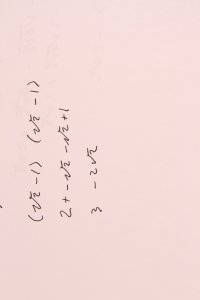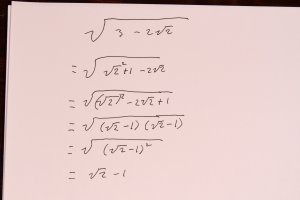jddoxtator
New member
- Joined
- May 28, 2024
- Messages
- 39
While finishing up the last lessons in Algebra II, I have found a serious hole in my radical knowledge.
When ever there is a binomial under a radical expression that also has a radical, I have no idea how the calculator gets it to the simplest form of one radical to an integer.
I checked all the chapters in the text book about radical equations and expressions, but could find no direct examples of this.
Here is an example of one I can't figure out.
When ever there is a binomial under a radical expression that also has a radical, I have no idea how the calculator gets it to the simplest form of one radical to an integer.
I checked all the chapters in the text book about radical equations and expressions, but could find no direct examples of this.
Here is an example of one I can't figure out.



